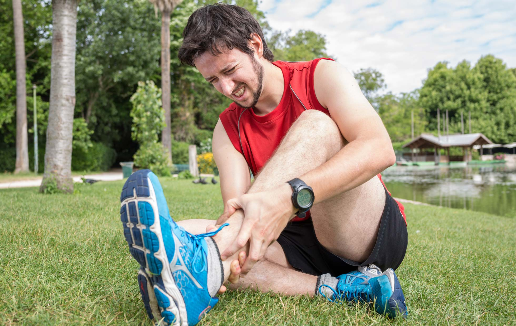
Sprains
Sprain: An injury to a ligament, the tough band of tissue that connects two or more bones at a joint. When a sprain happens, one or more ligaments are stretched or torn.
Is a Sprain an Emergency?
 Sprains are painful, but a visit to an emergency room is not usually required.
In fact, mild sprains respond well to home treatment. However, if the
sprain is severe, other injuries like fractures can also occur.
Sprains are painful, but a visit to an emergency room is not usually required.
In fact, mild sprains respond well to home treatment. However, if the
sprain is severe, other injuries like fractures can also occur.
Go to an urgent care facility if:
- You can’t move or bear weight on the sprained joint.
- Have numbness in any part of the injured limb or joint.
- Have pain directly over the bones of the injured joint.
What Does a Sprain Look and Feel Like?
- Some swelling or bruising
- Pain or discomfort when using the sprained joint
- During injury, may hear or feel a pop
What Causes Sprains?
Sprains occur when a joint is twisted or turned awkwardly, stretching or tearing the ligament holding the bones together. Ankle sprains are common – as you walk or run on uneven ground or make a quick turn, you can roll your foot inward or, more commonly, outward at the ankle.
Other joints can become sprained by:
- Twisting a knee
- Falling on an arm and twisting a wrist, elbow, or shoulder
- Spraining a thumb through overextension
- Landing so that the joint is stretched beyond its normal limit
Wearing appropriate and well-maintained footwear and sports equipment helps avoid sprains.
Diagnosing a Sprain
A physician examines the injured limb, touching around the sprained area to determine tenderness. Your range of motion is also checked to understand any positions causing pain or discomfort.
A severe sprain may prompt the physician to recommend one or more imaging scans such as X-rays, MRIs (magnetic resonance imaging), CT scans, or ultrasounds.
Treatment
Maybe you remember this from a first aid course. It is a good approach for almost any sprain.
R – Rest: avoid using the joint when the activity is painful.
I – Ice*: place an ice pack or put the joint in a slush bath for 15 to 20 minutes and repeat every two to three hours while awake.
C – Compression: Use an elastic bandage to compress the joint, if possible, until the swelling stops. Take care not to bind too tightly and cut off circulation.
E – Elevation – elevate the joint above the level of your heart, especially at night so gravity can help drain excess fluid that causes swelling.
*NOTE – if you suffer from diabetes, decreased sensation, or have vascular disease, speak with a physician before applying ice.
The R-I-C-E approach used for two to three days after the sprain can bring down the swelling and ease the pain discomfort. If under the care of a doctor, follow instructions.
